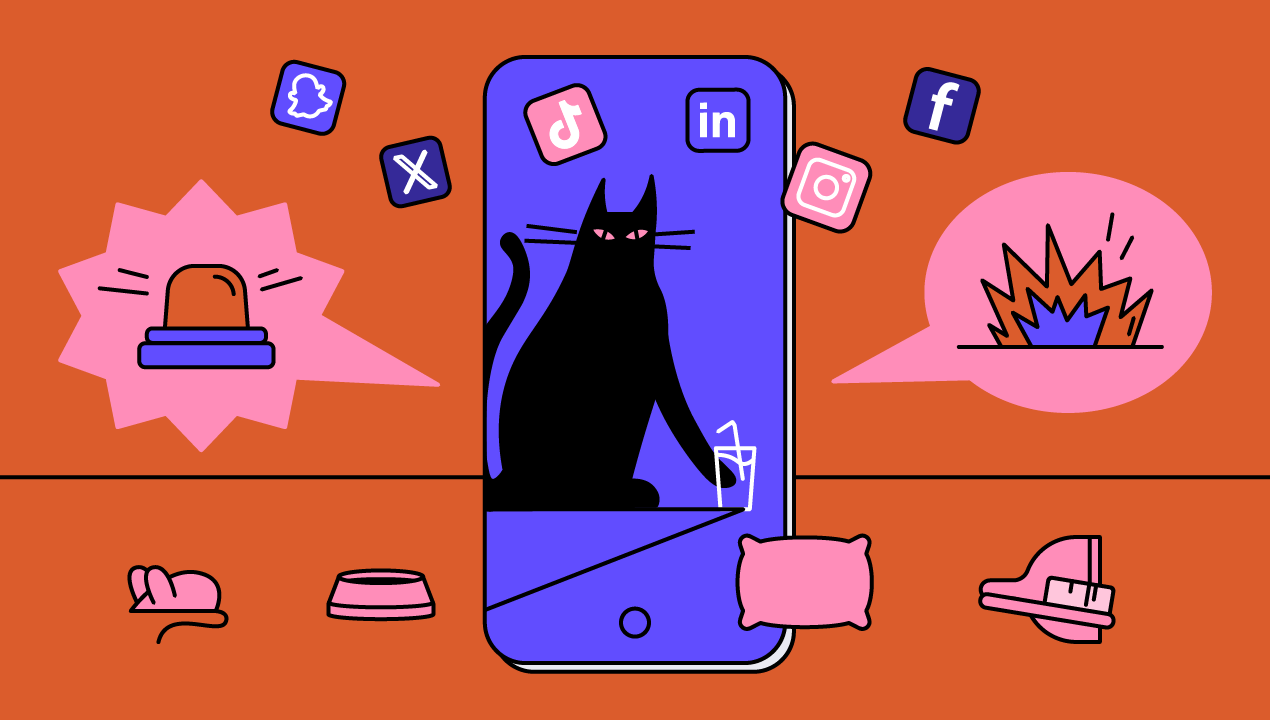Ever had one of those days when things suddenly blow up online and your notifications won’t stop pinging? That’s what a social media crisis can feel like—fast-moving, a bit overwhelming, and often unexpected.
But here’s the thing: you’re not just watching from the sidelines. You’ve got the tools, the access, and the voice to step in and handle it. Whether it’s a negative comment gaining traction or a bigger issue bubbling up, there is a way to take control.
This is what social media crisis management is all about and this guide will show you how to stay prepared, respond smartly, and bounce back stronger.
Try Prowly's media monitoring free for 7 days
Start tracking your brand and keywords for free (no credit card required) in Prowly.
- Comprehensive monitoring: Track the web, social media, print, and broadcast mentions
- Transparent pricing: Plans start at $258/month
- All-in-one platform: Get everything you need in one tool for PR, incl. media database, outreach, reporting, and more
What is a social media crisis?
A social media crisis occurs when a brand receives negative attention online which then spreads rapidly. Social media crises typically happen on platforms such as Instagram, TikTok, Facebook, LinkedIn, and similar ones.
Every social media crisis has one thing in common: they incur lots of damage in a short time period, all thanks to the fast-paced nature of social media as a communications channel.
But how do you know if you're dealing with a proper social media crisis instead of a regular Tuesday morning of unhappy customers?
Here's a side-by-side comparison of a regular problem (e.g., a few negative comments) vs. a full blown crisis.
| Routine Issue | Social Media Crisis | |
| Visibility | Low. Limited to a few comments or isolated complaints | High. Widespread attention across multiple platforms |
| Pace of escalation | Gradual or contained | Rapid. Can go viral within hours |
| Public reaction | Minor concern or annoyance | Outrage, backlash, or strong emotional response |
| Media involvement | Unlikely to attract media coverage | Likely to draw attention from journalists, influencers, or news outlets |
| Impact on brand | Minimal. Localized and often easily resolved | Significant. Potential reputational damage, revenue loss, or stakeholder pressure |
| Need for executive input | Rare. Handled by frontline teams | Often. Requires leadership involvement and official statements |
| Example | A few customers complain about late deliveries | Viral video shows unsafe working conditions at a warehouse |
| Response urgency | Standard support or PR response timeframe | Immediate, coordinated crisis communication required |
| Monitoring required | Basic social listening | Advanced media monitoring, sentiment tracking, and real-time alerts |
When a crisis strikes, you'll need a crisis management tool to help you determine and mitigate damage. This is where platforms such as Prowly help, providing media management tools to spot problems early on.
Why social media matters in crisis management
Social media has the power to either calm the storm or make it worse. It all comes down to how you use it: work it into your crisis plan and it can make life easier—or ignore it, and risk turning a small issue into a big mess.
Platforms like Twitter (X), TikTok, and Instagram act as accelerators in a crisis. A single tweet, video, or comment can:
- Go viral within minutes, reaching millions before your team has even drafted the first response.
- Shape public opinion instantly, often before full context is available, potentially leading to massive reputation damage.
- Attract media attention, as journalists now source breaking stories from viral posts.
Here are some examples where the social media manager acted too late, wreaking havoc on the brand's reputation:
1️⃣ OceanGate’s Titan sub disaster (2023)
When the sub went missing, TikTok and X were flooded with memes, theories, and panic. OceanGate failed to update in real time, letting misinformation dominate the narrative.
Here is a part of Guillermo Söhnlein's (co-founder and former CEO of OceanGate, Inc.) publication "OceanGate & Titan - Lessons Learned in Crisis Communications":
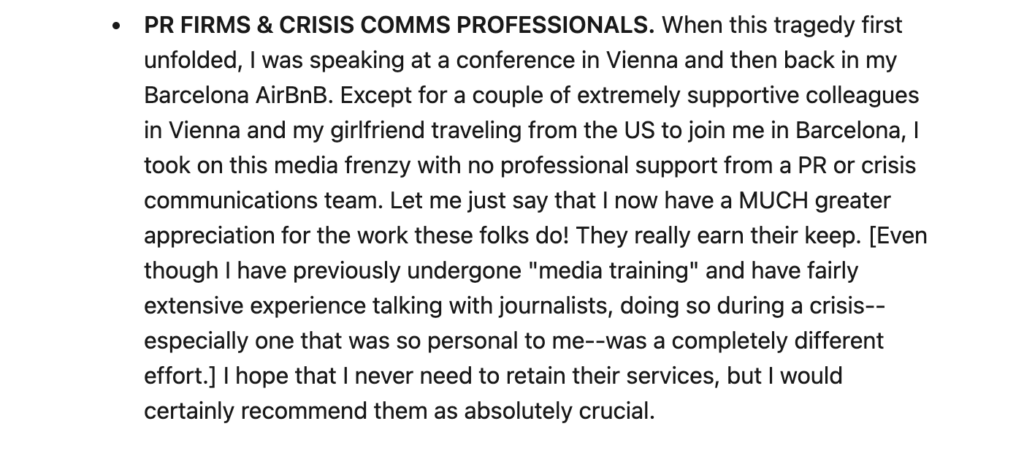
2️⃣ Airbnb hidden camera accusations
Multiple TikTok posts about hidden cameras in rentals went viral, but Airbnb didn’t respond until traditional media picked it up, losing control of the story.
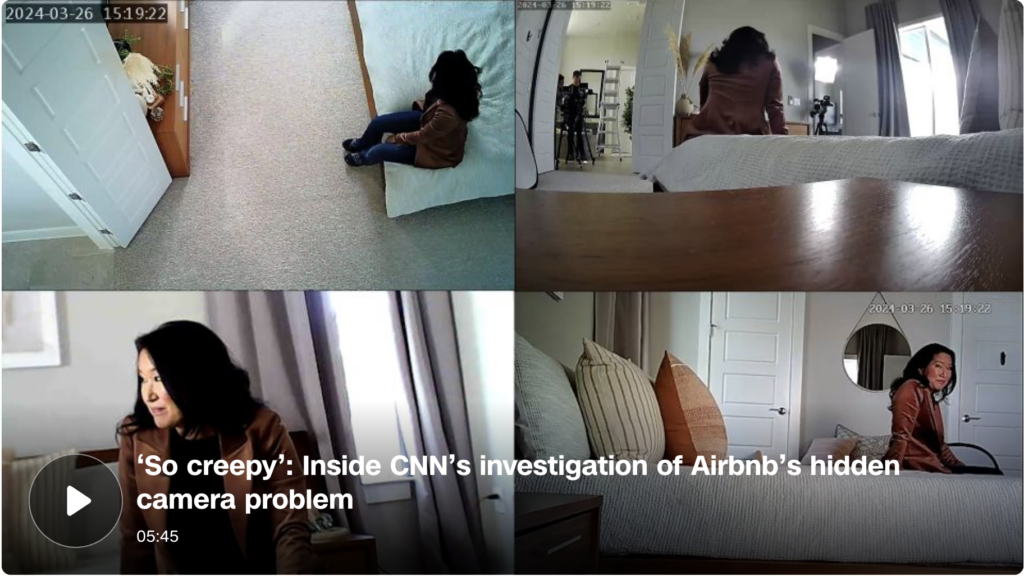
3️⃣ Volkswagen’s prank ad gone wrong
A fake kidnapping teaser video sparked outrage on Instagram. VW deleted it too late and screenshots kept circulating, making matters worse.
P.S. Here’s an article that might come in handy if you’re looking for a tool to measure the impact of your communication efforts.
Crisis management strategy: key pillars
To do social media crisis management well, you need a plan and a strategy. Each crisis management plan will be different depending on your audience, the social media guidelines for a specific platform, the amount of potential damage, etc.
However, these are the main pillars of every good social media crisis management strategy:
#1 Preparation
The best time to prepare for a crisis is before it happens. Having a plan in place helps your team stay calm and act fast.
Key steps
- Assign roles: Who monitors social media? Are we using any tools to track negative publicity? Who approves responses? Who contacts legal? Clear ownership speeds up reaction time and helps you mitigate damage.
- Prewrite holding statements: Draft templates for common issues (e.g., data breach, service outages, public backlash, or something specific to your industry/service/product).
- Conduct simulations: Run mock drills with different scenarios to test your plan and response time.
Why it matters: Confusion costs you in the first 30 minutes of a social media crisis. Clarity and coordination win trust with your target audience and the press.
#2 Monitoring
You can’t manage what you don’t see. Active social media monitoring lets you spot emerging issues and trends before they explode.
What to monitor:
- Brand mentions and hashtags
- Sentiment shifts (positive → negative)
- Influencer or media activity
- Customer DMs and replies
Why it matters: A single tweet or video can go viral in minutes. Early detection gives you a chance to get ahead of the story.
#3 Communication
When a crisis breaks, your communication must be cohesive and trustworthy, both externally and internally.
Best practices:
- Align internal and external messaging: Everyone from customer support to leadership should know what’s being said and how to say it.
- Respond quickly and humanely: Don’t hide behind PR jargon. Acknowledge the issue and show empathy.
- Stay visible: Use your main social accounts to update regularly, even if you’re still investigating.
Why it matters: Silence looks suspicious. Consistent messaging builds credibility and diffuses confusion.
#4 Recovery
Once the crisis subsides, the real work begins, as you begin restoring your brand’s reputation and preventing future issues.
Post-crisis checklist:
- Conduct a debrief: What worked? What didn’t? Where were the bottlenecks?
- Engage your audience again: Be transparent about what you’ve learned and how you’re fixing things in the future.
- Rebuild goodwill: Launch campaigns that refocus on customer value and trust.
Why it matters: Brands that bounce back strongest are the ones that take accountability and evolve from the experience.
💡 Prowly tip
Prowly can support your crisis response across all four pillars:
- Preparation: Use Prowly’s media contact database to build press lists for crisis-specific outreach, so you can contact the right people to rebuild trust fast.
- Monitoring: Track brand mentions and earned media coverage in real time with Prowly’s media monitoring features.
- Communication: Distribute press releases directly to journalists, influencers, and stakeholders through Prowly’s newsroom.
- Recovery: Analyze coverage and sentiment post-crisis to understand how your message was received and where to improve.

Crisis management plan for social media
A solid crisis plan gives your social team structure and speed when everything feels chaotic. Here’s what it should cover:
Internal roles and escalation paths
Define who’s responsible for what. Assign a crisis lead, social media monitor, content drafter, and legal/comms approver. Include an escalation path. Who gets notified and when? Clarity here saves critical minutes and prevents even bigger problems.
Holding statements
Prewrite flexible, situation-agnostic messages for common crises (outages, data breaches, backlash). These allow you to acknowledge the issue quickly while you gather more info. Adapt them for Twitter (X), Instagram, LinkedIn, and the press.
Approval workflows
List who must review and approve messaging before it goes live. Include time limits (e.g., 15-minute response window) and backup contacts in case key people are unavailable. Speed is everything.
Response playbooks
Document step-by-step actions for different scenarios, like negative media coverage, customer injury claims, or viral complaints. Include:
- Platform-specific tone guidance
- Sample replies
- Decision trees (when to respond vs. when to stay silent)
Enhancing prevention: account security + internal comms
You can prevent most social media crises simply by doing your homework and staying prepared.
- Keep your accounts secure. Create unique passwords for every social media platform, change them regularly, and use two-factor authentication to stay safe. Determine different access levels for each team member.
- Regularly review scheduled content. Make sure that the content that is just about to go live doesn't interfere with the "hot" debates going on at the moment of pushing the content out.
- Include internal messaging as the first step in the response. Keep everyone on the same page within your team before going public with any kind of response.
Here's a mini checklist to keep you prepared for all situations:
Social media crisis management checklist
| Step | To-do list |
| 🔐 Secure your accounts | 1. Enable 2FA (two-factor authentication) on all social platforms 2. Limit admin access to key team members only 3. Review roles and permissions (no outdated or former-employee access) 4. Update passwords and store them securely (use a password manager) 5. Check connected apps for unauthorized integrations |
| 👥 Align your internal team | 1. Assign roles: spokesperson, social media responder, legal, comms lead 2. Share crisis messaging guidelines with all departments 3. Prepare FAQs or holding statements for immediate use 4. Brief customer service teams on what to say and where to direct inquiries 5. Set up an internal comms channel (Slack/Teams) for real-time coordination |
| 📢 Before going public | 1. Double-check facts and timeline with legal or compliance when needed 2. Finalize initial public statement for social media and press 3. Schedule cross-channel updates (website, newsroom, email, social) 4. Monitor reactions in real time once the statement is live 5. Be ready with follow-ups in case the situation escalates |
Real-world social media crisis examples
(Un)fortunately, examples of crises happening on your social media platform are very common.
The great news is that you can learn a lot from their mistakes so you can prepare a better crisis response for yourself in the future.
#1 KFC's UK chicken shortage fiasco
In 2018, KFC UK temporarily closed over 600 restaurants after switching to a new logistics provider (DHL), which failed to deliver chicken on time.
Customers flooded social media with complaints and jokes. KFC responded with humor. Most notably, there was a full-page ad showing an empty bucket rebranded as “FCK,” earning public sympathy for its honest and transparent response.
How Prowly could have helped:
- Media monitoring would have allowed KFC to detect rising sentiment shifts and trending keywords like “chicken shortage” or “DHL fail” in real-time.
- Using press release tools, the PR team could have issued proactive statements to explain the issue early and maintain control over the narrative.
- With media contact management, they could’ve quickly reached key journalists to frame the story positively before it spun out of control.
#2 United Airlines passenger dragging incident
In 2017, a passenger was forcibly removed from an overbooked United Airlines flight.
A video of the incident went viral, sparking outrage. United's initial response was defensive, calling the passenger “disruptive,” which only worsened public perception. Eventually, they apologized, but the delayed and tone-deaf reaction caused lasting damage.
How Prowly could have helped:
- Crisis monitoring would have flagged the viral spread of the video immediately, before the backlash peaked.
- Using automated alerts, United’s PR team could have been notified about trending content involving the brand.
- Media sentiment tracking would have shown the overwhelmingly negative tone, nudging leadership toward a more empathetic and timely response.
- Press room features could help publish updates and apologies faster.
#3 Balenciaga's controversial ad campaign
In late 2022, Balenciaga faced severe backlash for an ad campaign featuring children holding teddy bears in bondage gear.
The imagery sparked accusations of exploiting children and promoting inappropriate themes. The brand was slow to respond and their initial statement blaming other parties made things worse.
How Prowly could have helped:
- Pre-campaign media intelligence tools could have flagged risky themes or similar controversies in the media space so they could have smelled trouble from a mile away.
- Media monitoring would’ve picked up on early criticism before it snowballed into a full-blown crisis.
- Crisis communication tools would have supported faster internal alignment and timely responses, helping the company resolve issues before they got to the press or relevant influencers.
- Prowly's influencer and journalist database could have helped Balenciaga engage voices of trust to clarify intent and shift the conversation.
Best practices in social media crisis communication
When you're preparing your crisis response team and overall strategy, there are a few things you can implement that are universal across industries and clients.
👉 Pause automated posts
When trouble is brewing, the last thing you want to do is create scheduled posts promoting your latest product or post photos from your Christmas office party.
When the first signs of a crisis show up, stop all scheduled and automated posts until the crisis is resolved.
👉 Respond quickly and consistently
One of the easiest ways to ruin your company's reputation is to not respond to negative comments or to do so when it's too late. Respond promptly across your social media accounts and reassure customers and bystanders that everything is going according to plan.
👉 Be human and transparent
Don't try to sugar coat a crisis by pretending it's not happening or responding to everything except the issue at hand. Recognize your mistake and own up to it; you'll have to do that sooner or later. The sooner you do it, the better for your crisis management team and company.
👉 Monitor sentiment and adapt messaging accordingly
Base your response strategy on the sentiment of the mentions that come in for your brand. For example, if the majority of mentions across social media posts are negative, it means you should spend more time addressing concerns. And when the sentiment switches to positive, you can adjust the content to suit your social media strategy.
PS. you can use Prowly as your PR coverage tool during a crisis to make educated decisions in real-time. Prowly sends you relevant mentions and performs sentiment analysis, helping you spot spikes in negative sentiment or any major changes with ease.
Tools for managing a social media crisis
Managing crises can be done manually, but why bother when there are so many tools to help you get results more quickly and easily?
Prowly – best for PR-focused crisis management
If you work in PR, Prowly is your crisis HQ. It provides everything you need to communicate quickly and effectively during a social media emergency.
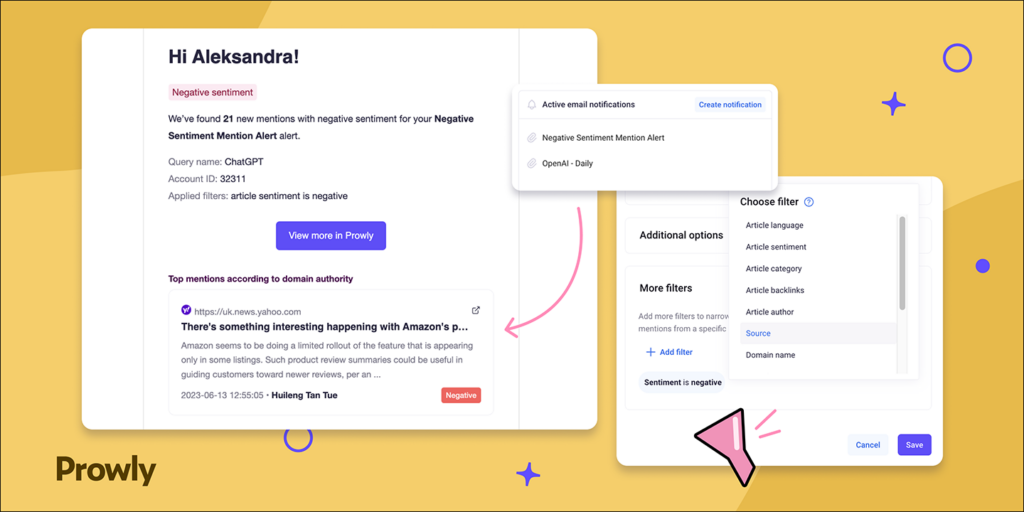
- Quick press release distribution: Share updates instantly via your newsroom or directly with journalists.
- Custom media lists: Build and segment outreach lists for urgent, targeted communication.
- Media monitoring: Track brand mentions and earned media coverage in real time.
- Journalist engagement insights: See who’s opened your emails and what’s getting attention.
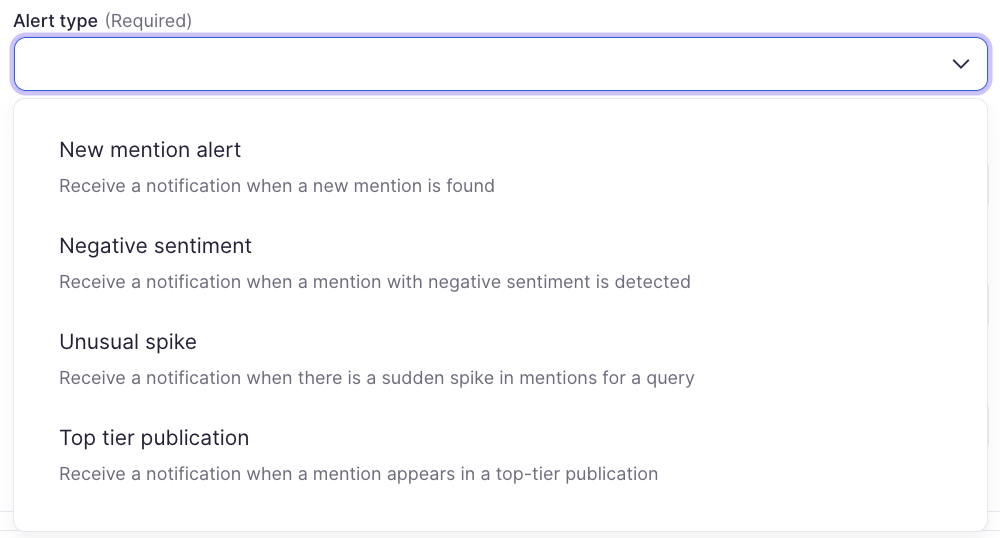
Prowly helps you stay in control of the story when it matters most—getting your side out fast and to the right people.
Brand24 – best for real-time social listening
Brand24 keeps its finger on the pulse of the internet. It monitors social media, forums, blogs, and news sites to alert you when your brand is mentioned, especially when sentiment turns negative.
You can get real-time alerts for keyword spikes, influencer mentions, and trending hashtags. It’s particularly useful in the early stages of a crisis, when a single post or video might start picking up steam.
While it’s not a PR tool, Brand24 is excellent at spotting a storm before it hits, giving you time to react and prepare messaging.
Conclusion
To get out of a social media crisis unharmed, you need to do just a few things well. Plan ahead for uncertainties, act fast when a crisis happens, and communicate clearly about what happened. Everything else is a walk in the park.
Don't take crisis management for granted. Build a crisis management strategy and document it. As time goes by and social media platforms change, refine your strategy on the go.
Last but not least, use tools such as Prowly to monitor your social media and get quantitative data on crises as they unfold.
